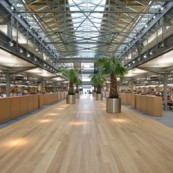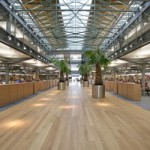


Posted by Roger Galpin on Mar 19, 2010 in Blog | 0 comments
However, to make the most of the unique appeal of timber in our homes and buildings, we need to be aware of its natural characteristics which, if overlooked, can cause projects to fail and disputes to arise.
As one of the oldest materials known to man, wood has provided us with fuel wood, pulp and paper, utensils, furniture and a first class, environmentally friendly building material. So, given our familiarity with timber, why is it that some attempts to use it can result in expensive litigation?
In some cases, it would seem that it is our very familiarity that is the problem. So often, our failure to specify the correct species, treatment and condition of the timber can result in problems later. Likewise, poor manufacture, installation or incorrect maintenance can also result in timber projects falling short of expectation. As a consequence, it is often not the timber itself that is at fault but the way in which it is used.
An understanding of some of the basic properties of timber will help to ensure that it is used correctly, whether it is for a multi-million pound building or a weekend DIY project.
One of the most important and yet least understood factors, is that of moisture content.
Timber contains a large amount of water when it is freshly felled and it needs to be dried so that it can be used without excessive shrinkage and distortion. The amount of water in a piece of wood is referred to as its moisture content. This is expressed as a percentage of the dry weight of the piece, not of the total weight; hence it is possible to have moisture contents in excess of 100%.
The amount of water in wood rises and falls in response to changes in temperature and humidity, so it is not possible to prevent wood from expanding and contracting in service. However, this movement can be minimised by drying the wood to a level that it is likely to achieve in service, referred to as its equilibrium moisture content. As an example, indoor furniture would be expected to have a moisture content of around 8-10%, whilst external decking can be expected to attain an equilibrium of around 16% moisture content; this level would be subject to seasonal variations, becoming slightly higher in winter and lower in the summer.
 One other significant factor related to moisture content is the susceptibility of timber to decay. Wood destroying fungi , often responsible for timber decay in buildings and wooden structures, require timber to have a moisture content in excess of 22% for a prolonged period in order for them to become established and sustain their attack. However, a higher moisture content is one of the factors required by the fungi for optimum growth. For example, the true dry rot fungus, Serpula lacrymans, favours a moisture content of around 30-40%, while many of the wet rot fungi require a moisture content of around 50%.
One other significant factor related to moisture content is the susceptibility of timber to decay. Wood destroying fungi , often responsible for timber decay in buildings and wooden structures, require timber to have a moisture content in excess of 22% for a prolonged period in order for them to become established and sustain their attack. However, a higher moisture content is one of the factors required by the fungi for optimum growth. For example, the true dry rot fungus, Serpula lacrymans, favours a moisture content of around 30-40%, while many of the wet rot fungi require a moisture content of around 50%.
Moisture content is of course just one factor when considering using timber. There is a wide range of industry standards and guidelines relating to timber specification to ensure that the correct timber is used in respect of durability, strength, appearance, movement characteristics etc.
For case studies, read our article we prepared for JS Publications, publishers of the UK Register of Expert Witnesses…
Leave a Reply